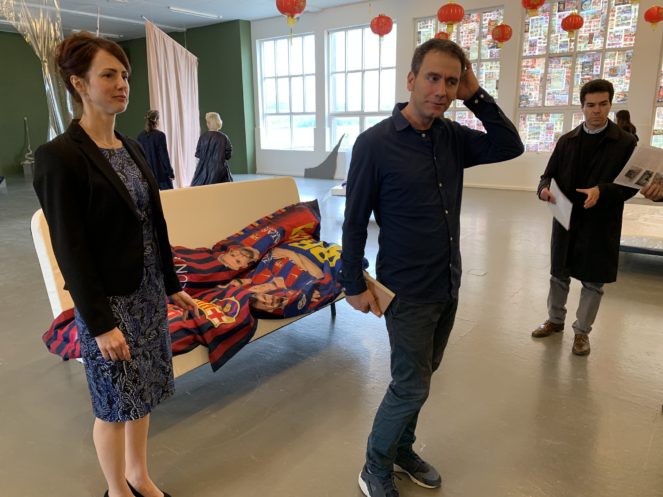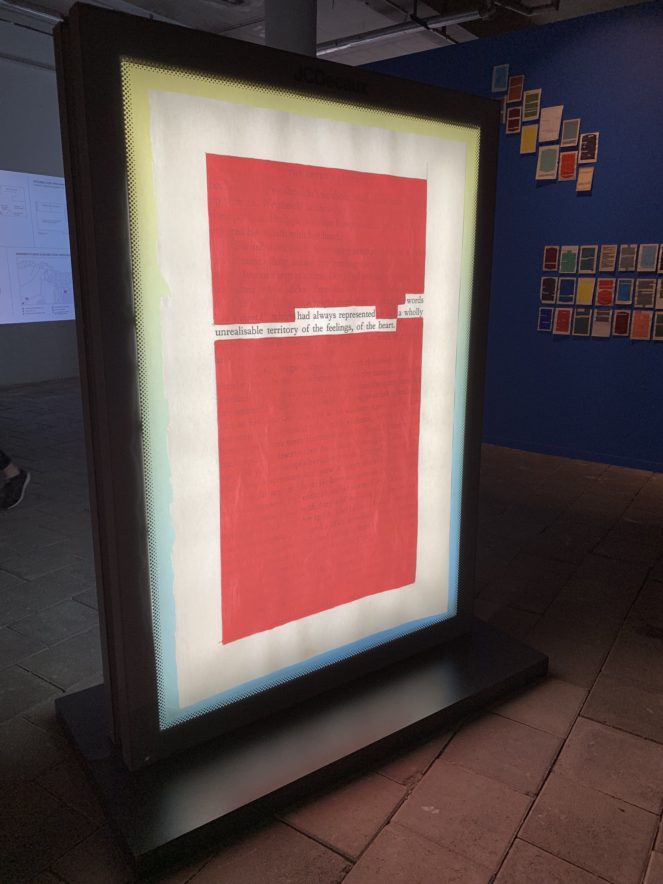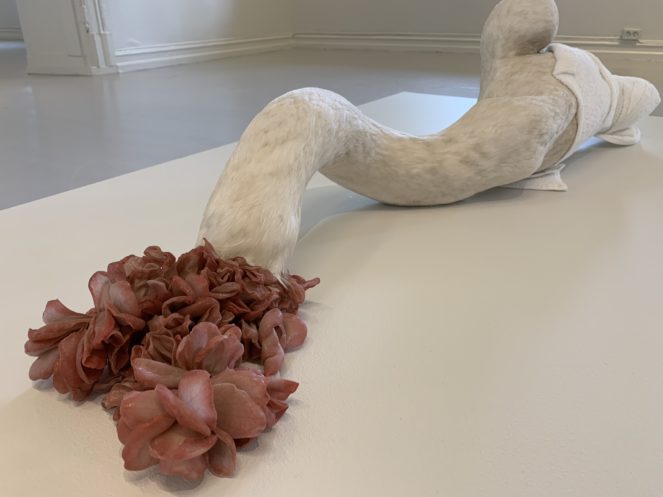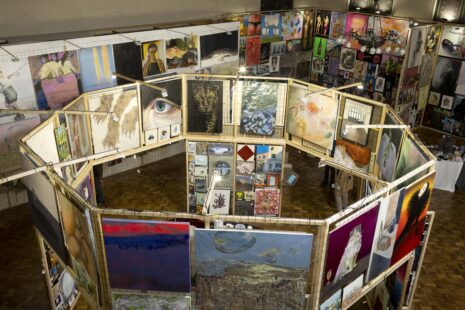Moss, an authentic small town on the coast of North Sea in Norway has hosted the contemporary biennale already for the past 20 years. The idea of the biennale arose in the town of only 50 000 inhabitants in the 1990s when the cultural community together with acting politicians decided to establish a new tradition of practicing different cultural activities specifically in order to develop the area of Mollebyen where the biennale is happening until this day. Momentum was first launched in 1998 in the context of so called Nordic miracle, when contemporary art from Nordic region was globally in spotlight. The name Momentum insisted on sudden movement and breaking through to reach something new. Now already more than 350 artists have contributed to the Momentum biennale during the past years.
Visitors tip: visiting the Momentum10 exhibition it is highly recommended to go through Reader, the accompanying book where Momentum10 director Dag Aak Sveinar and curators Marti Manen and Anne Klontz explain the curatorial choices of the exhibition. Featured previous curatorial interviews give a valuable insight into the changes of Nordic contemporary art scene during past 20 years.
Emotions – beyond language
As the concept of the biennale is explained by Curator Marti Manen, there is always something present in the moment that can’t be put into words. So we constantly need other means to formulate a relationship with reality. Art is an open situation with no closed grammar and which enables us to return to main questions. When and where words are difficult but nuances and complexity is present, art is the available tool to connect with the world.
There is always something present in the moment that can’t be put into words. So we constantly need other means to formulate a relationship with reality.

Curator Marti Manen and assistant curator Anne Klontz
Although Momentum10 represents mainly non-linguistic, emotional approach, the visitor is presented with a different angle while entering the Kunsthall. André Alves’ “Pre-text” is created through paintings of book pages full of of poetic phrases that the artist has underlined during the years. The artist is a frequent traveler who has encountered the common problem of not being able to travel with all the books he wanted. Having established a deep mental attachment to books, he decided to make a brutal act of eraser and tear out the pages of all the physical novels he wanted to preserve – making it a portable personal library, recycling the leftover pages. André Alves knows all the titles of the books the quotes are taken from by heart, still the titles are missing beside artworks carrying the idea of the work loosing its source. The process is about borrowing – the artist borrows experiences and thoughts from books which will become his, then pass it on to the viewer, who will be carrying them onwards. In life we are eternally borrowing something from someone, the question is what we will do with the experience and how it can be useful to others.
The real book pages are accompanied by outdoor lit advertisement boxes in the exhibition room and also spread out over the town. Advertisements are intended to play with our emotions, direct us to excess consuming and contribute to the shallow quickness of our days. How do we consume these phrases? Is it on the same shallow level of everyday advertisements or do we notice to stop and think deeper? eBook alike ad boxes are intended to look deeper through the surface of entertainment industry.

André Alves “Pre-text”
The biennale is about time and space, feelings and emotions
The curators’ aim has been to rediscover the artworks of the past and activate history in the context of the present. Hindsight is necessary to understand the concept of the biennale aiming to reformulate possible futures avoiding the option of forgetting. According to curator Marti Manen, the whole contraction makes sense as every single part of it is meaningful. Momentum10 has an exemplary list of artists and legendary artworks that are definitely worth the trip to Moss. Our only critical note involves the completion of the exhibitions as some of the pieces of the puzzle did not come together. The space and setting of the artworks was meaningfully thought through, but connections with other artists and works left a slight question mark as I would loved to have more connections between artworks.
For example, the work of Sissel Tolaas Molecule MOVX_01 at Kunsthall is expressed through the smell, connecting stairways from first floor leading to the second, without any object. She had created a scent for Momentum 8 in 2015 that is now re-represented. This work is in dialogue with other objects, because human mind needs an object to link the smell with. This triggers questions and emotions, linking the work very well with other pieces and leading us further on in the exhibition.
Recollecting exceptional works and events from the biennales’ history and adding new ones makes me wonder how and why these artists were chosen and how the past and current fit together.
What does “Nordic” and “Nordicness” mean?
Throughout the years the leading question of the Biennale has been what “Nordic” and “Nordicness” really mean. Finnish artist Hannaleena Heiska works “Stargazer” has been brought out as presenting Nordicness at the current exhibition. Finland is well known for its heavy-metal scene and Hannaleena’s works represent the world of heavy-metal and Gothic music. With half-human, half-animal creatures covered in tattoos and its beast-like elements, her paintings involve primitive and modern mythology mixed with her own spirituality. Heiska has also a background in graffiti culture.
Erik Öberg sculptures
I found the new works by the Swedish artist Erik Öber to be among the most compelling ones. His sculptures are beautiful and poetic but also repulsive and straightforward. Erik references to the still life tradition which often involve hidden meanings and symbols. His artworks make a commentary on greed and consumption, foreshadowing our future demise. The sculptures are technically complicated masterpieces, made with fragile and warm materials. The resulting objects evoke a sense of uncertainty as they could be soft or strong, dead or alive, temporary or permanent.

Swedish artist Erik Öberg sculpture
Pornographic comic bookshop
The House of Fun, 2019 – a pornographic bookshop by artist Francesc Ruiz will definitely gain a lot of interest. This alternative porn comic bookshop explores radical fetishes and sexual imagery. The artist says it is a safe space where to explore and share new ideas, testing the limits of representation and the boundaries of freedom of speech. Under different covers or fetishes listed in different categories, the viewer can actually find the very same comic book in totally different context. This artwork/bookshop is definitely a place for sub-cultural encounters giving a possibility for people to explore their own boundaries and fetishes.









